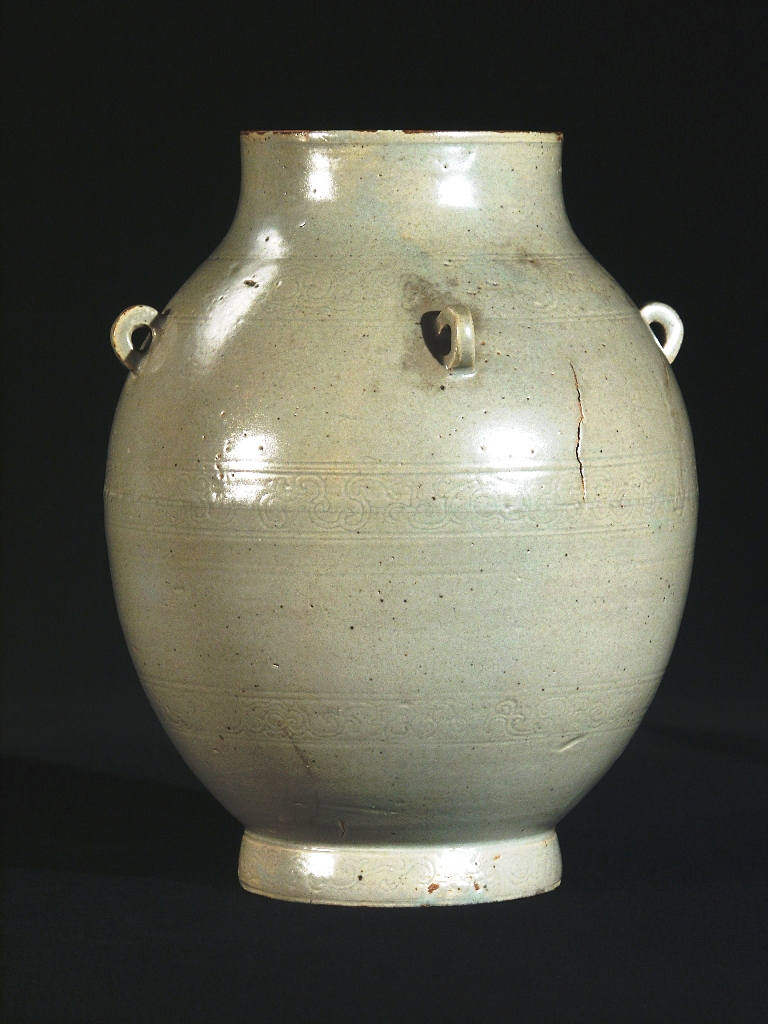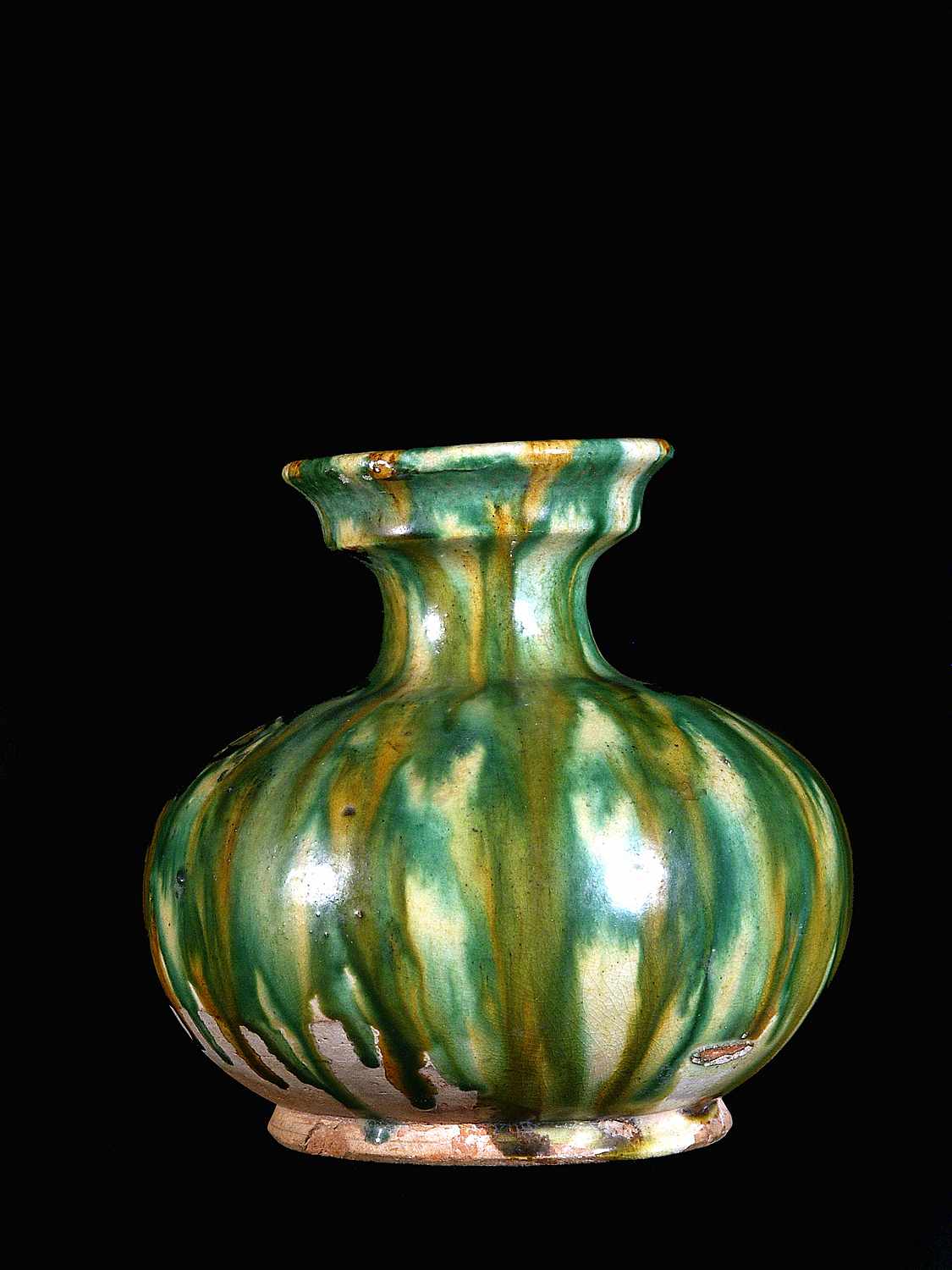The Art of Ceramics

Prof. Nicoletta Celli
The art of ceramics has been at the center of Chinese civilization throughout its entire history, each period providing objects of rare beauty, many examples of which are included in this collection.
Although not unique to China, it was there that the technology of ceramic production enjoyed an extraordinary and uninterrupted development.

Jar, earthenware with painted decoration
Neolitic Period (3000-1900 BC)
The Neolithic in China could already boast a wide variety of forms, conventionally divided into the red, white and black ceramic ware produced by the numerous cultures on the territory that were to coalesce into what we know as Chinese civilization.
One of the first key inventions to set the tone for future experiments was the creation of stoneware, glazed pottery fired at an extremely high temperature.
This new ware dates from the Bronze Age and was developed in the strategic area of the lower reaches of the Blue River, corresponding to present-day southern Jiangsu, northern Zhejiang and northern Jiangxi.

Jar with four small handles
Southern Qi Dynasty
It was the kilns in this area that produced the green-glazed ware better known in Europe as celadon, a definition that is applied more generally to all ceramics fired at high temperature and distinguished by a glaze that can range from various tones of green shading into blue irrespective of the zone of production (like, for example, the Yaozhou and Longquan specimens on display).
This type of green-glazed ware continued to be made over a long period, during which there were numerous technical developments leading to a durable, impermeable green ceramic that looked very like jade, the most precious of all materials for the Chinese.

Hu Vase
Wang Mang (9-23)
Lead-glazing, another innovation that was to lead to notable developments in the following centuries, was developed in northern China in around the first century BC, during the Han Dynasty.
Earthenware objects with a bright green glaze were designed to be placed in tombs and included forms based on bronze vases, human figures who might be attendants, soldiers, dancers or musicians as well as little models of dwellings, guard towers, pigsties, wells and barns.
This type of glaze, in which lead oxide fused at 800° C, enabled considerable savings in time and fuel and its smooth, bright finish and perfect adherence to the body were highly prized features.
The color of the glazing was obtained through adding metal oxides (iron, copper and cobalt), giving monochrome glazes when fired in an oxidizing atmosphere (various shades of brown, and green and blue, respectively). Of these, green glazes were the most popular in Han times.

Vase with dish-shaped mouth - Tang Dynasty
During the Tang Dynasty, the technique of allowing different shades of lead glazes to run over the surface of an object gave rise to the so-called sancai (three-colored) wares, which were produced in the north and gave bright, sharply-contrasting chromatic effects. The objects were fired twice (once for the ceramic body and another time for the glazing) and were generally made for funerary purposes.
